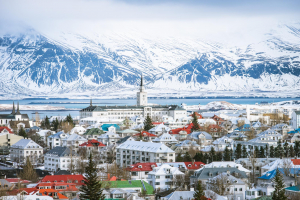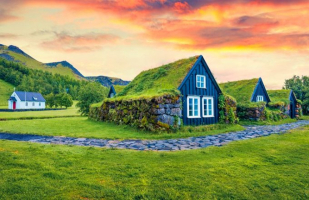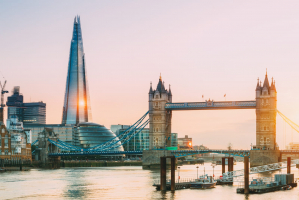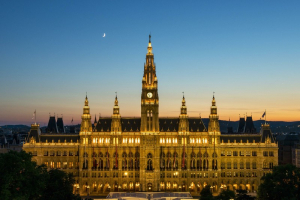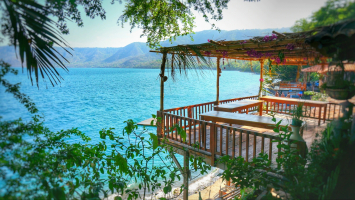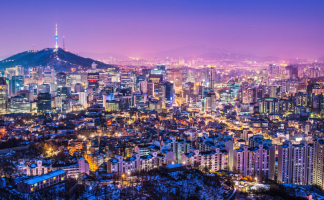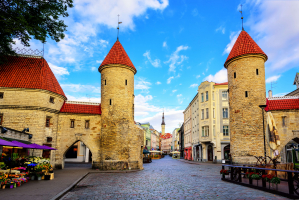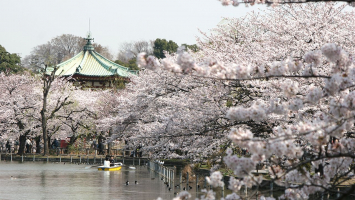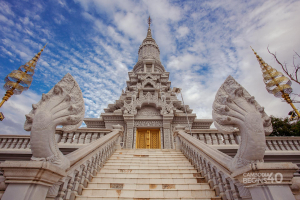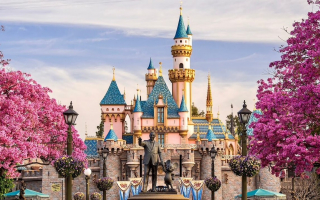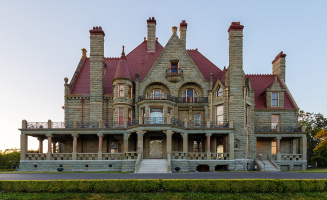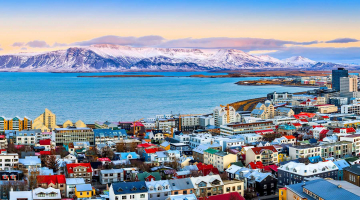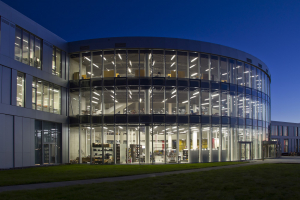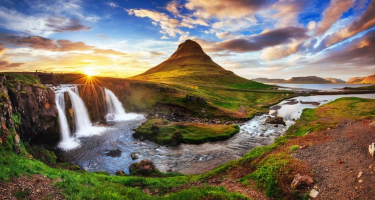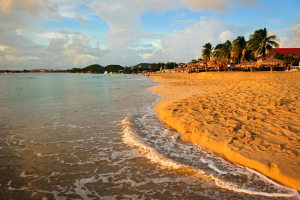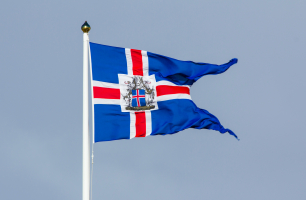Top 10 Awesome Water Attractions to See in Iceland
Iceland, the island of fire and ice, has elevated itself to the top of travelers' lists worldwide, attracting both nature lovers seeking a unique experience ... read more...and thrill-seekers. Contrary to what you may believe from hearing the term Iceland, the nation is rich in water and vegetation rather than ice. Despite the fact that Iceland has a lot to see, the water attractions are the best. For anyone wishing to have a good time while visiting Iceland, check out these amazing water attractions.
-
Selfoss, the biggest town in southern Iceland, lies tucked away on the banks of the lovely lfusá river. This town, which is the commercial hub of the nation, is teeming with numerous small businesses. Selfoss, which has a wide variety of ancient structures and hosts a number of vibrant festivals, is considered the cultural hub of southwest Iceland. Selfoss' unrivaled beauty is best summed up by its gushing waterfalls, stunning hot springs, and azure swimming pool. The charming character of this town is further enhanced by the little, well-preserved villages in the past. On your trip to Selfoss, you'll never want for options because this location will reward you with a wide variety of attractions.
The Selfoss Swimming Pool, Bobby Fischer Center, Selfosskirkja, Huppa Ice Cream Shop, Bóhsi Cinema, and Tryggvaskáli are some of the most popular attractions in this town. You may arrange to partake in a wide variety of enjoyable activities while you are in the town of Selfoss. You may go Northern Lights hunting, hang out with pals at Bókakaffi, enjoy unique beers at lvisholt Bruggh's, and enjoy street cuisine at Vefjan. Selfoss experiences a mild, moderate environment with substantial annual precipitation.
Location: Southern Iceland
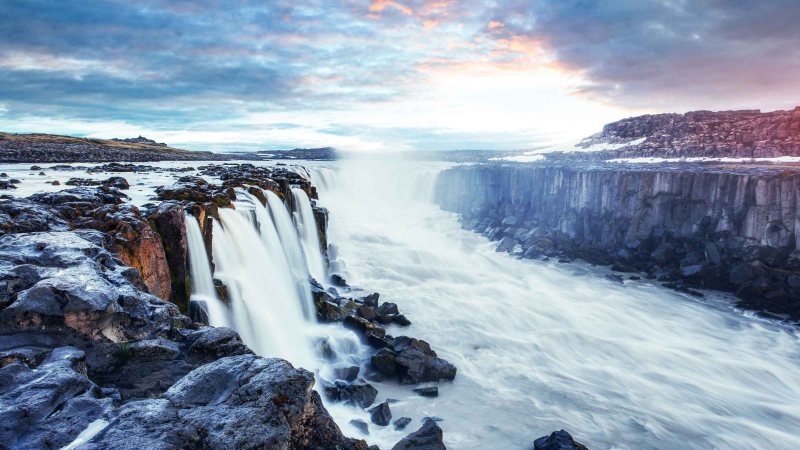
GetYourGuide 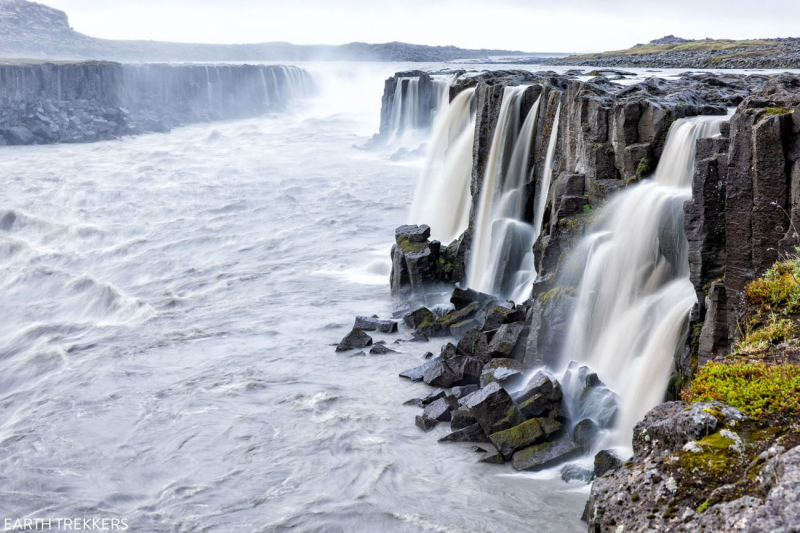
earthtrekkers.com -
The Blue Lagoon, one of the world's most stunning natural wonders, is the pinnacle of scenic beauty, pleasant ambience, richness, and pleasure. Its beautiful, pure blue water is also rich in minerals that are wonderful for the skin. You fall in love with the surroundings when you see the turquoise sea surrounded by the dark lava fields and creeping grey moss. The Blue Lagoon, which situated on the Reykjanes Peninsula, draws visitors from all over the world with its exquisite hot spring water and baths. Additionally, the magical water's year-round average temperature of 39°C (102°F) provides a comfortable swimming atmosphere.
Despite being one of the top ten natural spas in the world, the Blue Lagoon was actually created in 1976, not far from the Svartsengi geothermal power station, and is a man-made marvel. The lagoon's water is pristine, devoid of dangerous chemicals, and abundant in natural minerals and silica that are excellent for those with skin conditions like psoriasis. The lagoon's ability to replenish itself with fresh water every 48 hours is another strength. This ensures that the water is always entirely clean. Blue Lagoon is tucked away in the Reykjanes UNESCO Geopark, not far from the Keflavk International Airport and the heart of Reykjavk.
The Blue Lagoon package should be reserved in advance because it is a popular tourist site and can only accommodate a certain number of people at once. Other attractions of this magnificent lagoon include a café, restaurant, hotel, walking trails, miniature bridges, saunas, and a shop offering Blue Lagoon's high-end skin care items.
Location: Reykjanes peninsula, Southern Iceland
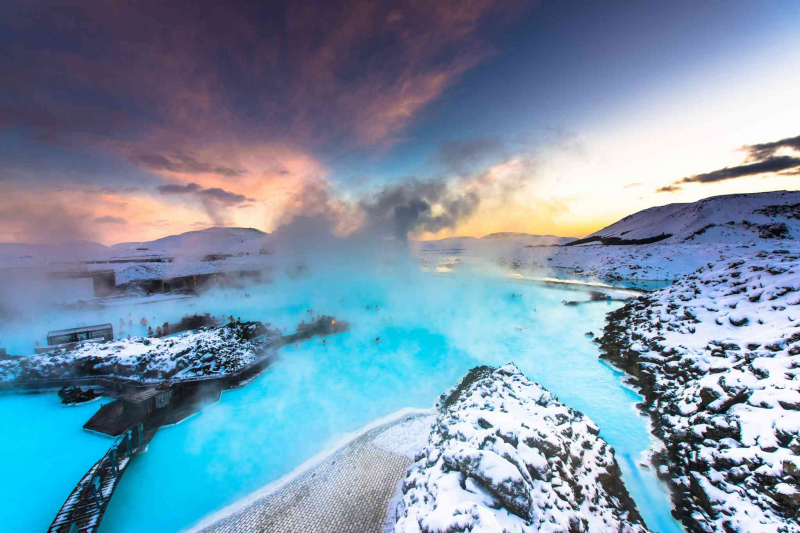
aesu.com 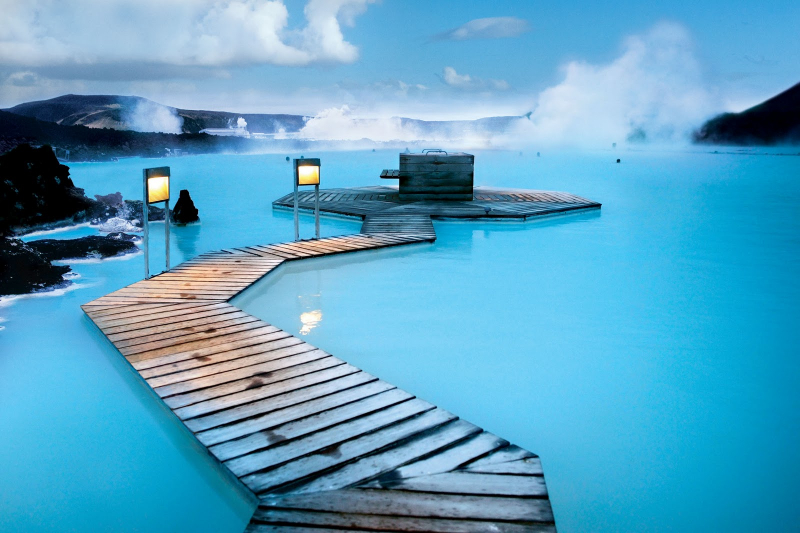
taxi-tours.is -
Jokulsarlon is a glacial lagoon that abuts the Vatnajokull National Park's western boundary and is considered to be one of Iceland's top tourist destinations. Jokulsarlon, which is dotted with icebergs all year long, is unquestionably Iceland's most stunning sight. The deepest lagoon in Iceland is called Jokulsarlon, and it lies 248 meters below earth. As the lake runs alongside, the black sand beach along the coasts continues to be littered with ice chunks that like tiny shards of black diamond. Although visitors frequently visit the lagoon for boat trips, many also come for leisurely seal watching and picture excursions.
Jökulsárlón is somewhat of a hot point for Iceland's wildlife due to the abundance of herring and capelin that the tides bring into the lagoon. It is an Arctic Tern breeding location in the summer; keep well away from it since these birds are infamous for their violent defense of their eggs, diving-bombing the heads of those they see as a danger. This time of year, skuas build their nests on the lake's banks. The entire year, seals may be consistently seen swimming among the icebergs or hauling out on them. Given that there are orcas frequently spotted in the seas around southeast Iceland, Jökulsárlón offers them a secure place to relax and interact.
Location: Skaftafell National Park, Route 1, Jokulsarlon 781
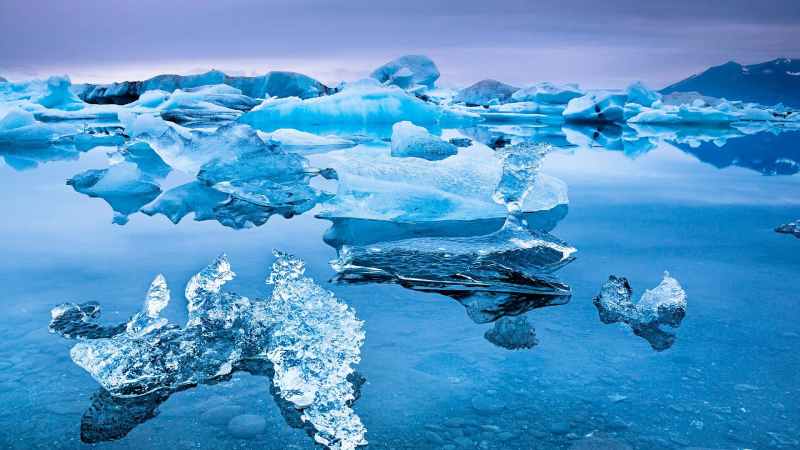
Pentax Forums 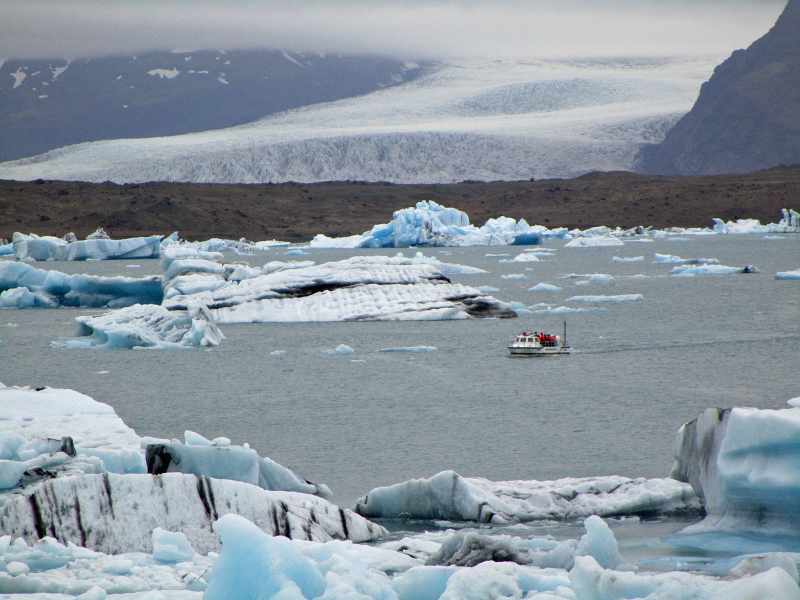
texantreks.com -
Iceland's black beaches are incredibly romantic and exude a sense of mystery. One of Iceland's well-known black sand beaches is Reynisfjara, which is known for its gigantic basalt stacks, breathtaking views, and raging Atlantic surf. If you're wondering how beaches get their dark color, you should know that volcanic ash is the source of black sand beaches. Given that Iceland is home to over 130 active volcanoes, black volcanic beaches are undoubtedly commonplace here.
The Jökulsárlón glacier lagoon's Breiamerkursandur ice Diamond beach is a beautiful beach with shimmering icebergs resting on the black sand. You get the impression that you are entering a magical place surrounded by sparkling diamonds the moment you step foot in the lagoon.
Another dark beach in Iceland is Sólheimasandur, which also has a strange attraction in the shape of an aircraft wreck. The Skogafoss waterfall, which is quite near to the Sólheimasandur beach, promises to take you to a natural wonderland. The Stokksnes beach, another black beach on Iceland's southeast coast, offers spectacular vistas of the Vestrahorn Mountains and an ideal setting for breathtaking photos. On the point of the Snaefellsnes Peninsula, there is another surreal beach called Djpalónssandur. It is a black pebble beach with the most amazing volcanic rock formations.
Location: Reynisfjara black beach, Víkurbraut, Mi Da Shi, Sudhurland
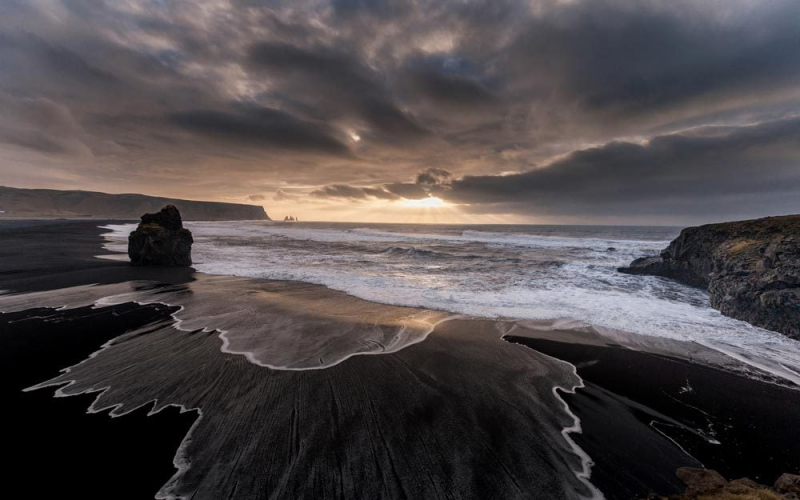
Reader's Digest 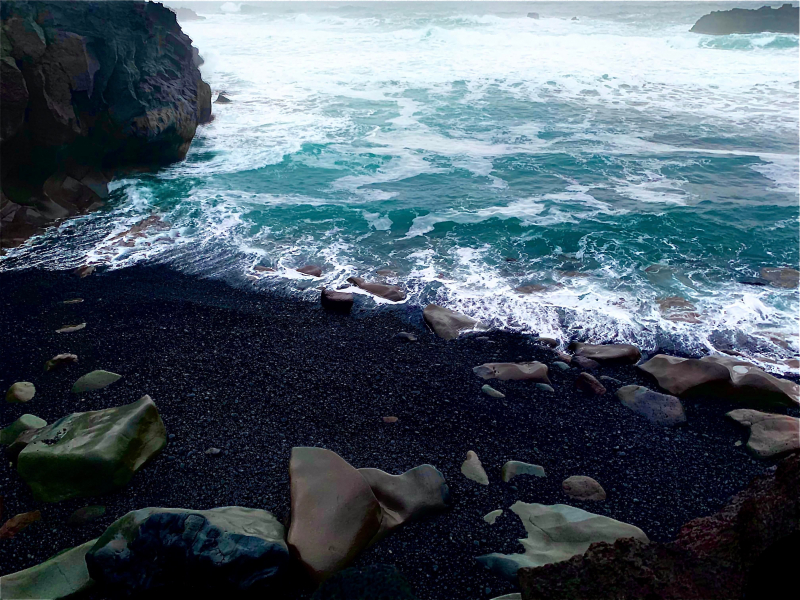
Wallpaper Cave -
Dettifoss, a waterfall in the Vatnajokull National Park, takes pride in being Europe's second-strongest waterfall after the Rhine. The waterfall, which plunges from a height of over 144 feet above sea level, draws visitors all year long. The waterfall is surrounded by a dense mist on all sides, giving it one of Ireland's most spectacular sights. Fantastic front-row views of the falls are available from a tiny observation platform before them. The region is beautifully viewed from a number of hiking paths that bridge the falls. The Dettifoss Waterfall in Iceland is referred to as "The Beast" because to its strength and the fact that when it is active, the earth underneath it shakes.
One of Iceland's most amazing sights is the Dettofoss Waterfall. The waterfall draws a lot of tourists and is featured on several excursions. Dettifoss Waterfall in Iceland is a popular destination for tourists who want to view the waterfall, the surrounding environment, and neighboring attractions. The Jökulsárgljfur Canyon is connected to the Detifoss Waterfall (Glacial River Canyon). Jökulsárgljfur has a length of 25 kilometers and a width of 500 meters. The deepest of Iceland's canyons, Jökulsárgljfur, is between 100 and 120 meters deep. Due to its numerous waterfalls, the Jökulsárgljfur Canyon is also the most beautiful.
Location: Vatnajokull National Park, Iceland
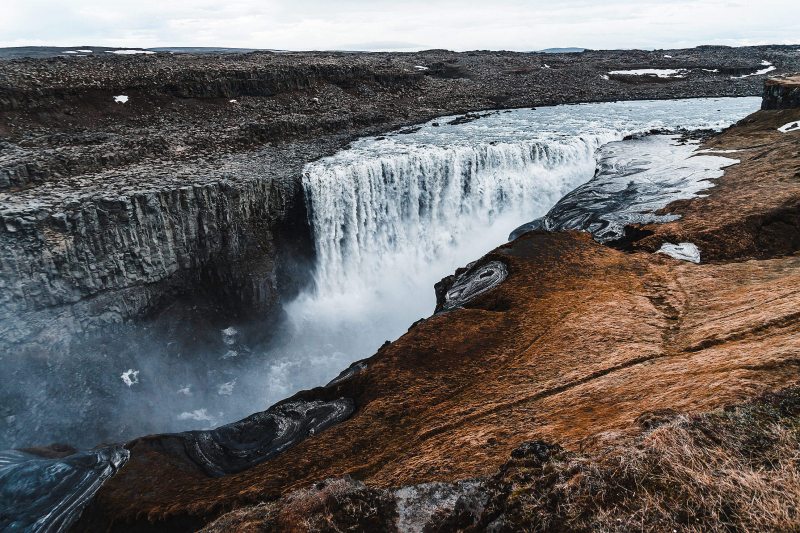
picjumbo.com 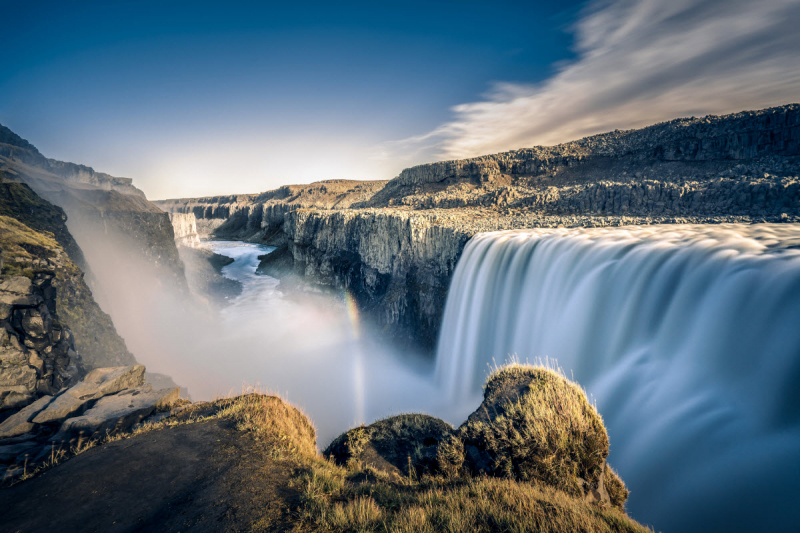
picjumbo.com -
Myvatn Lake, an hour's drive from Akureyri, is said to have been formed more than 2,500 years ago by volcanic activity. The many sights in this stunning terrain include lava structures, sulfurous vapors, and clay pits. This lake's water, which is azure blue in color, is quite shallow. Myvatn Lake, one of the greatest sites to visit in Iceland for birding, is teeming with a diverse bird population. A key draw of this location are the pseudo-craters created by volcanic eruptions spewing through the ocean. The south bank of the lake offers the greatest views of these craters.
While you're in Myvatn Lake, you may go along the lovely Leirhnjukur path, visit the Kirkjan lava tube formation, and ascend to the Krafla volcano's caldera. The lake receives its water from a nutrient-rich spring, and it is abundant in aquatic insects (Chironomidae) and Cladocera, which provide ducks with an alluring source of food. At this location, ducks of fifteen different species breed—the most in all of Europe. The species mix of ducks is unusual, including species from Europe, North America, the boreal regions, and the arctic. The Slavonian grebe, red-necked phalarope, great northern diver, red-throated diver, and whooper swan are further common waterbirds. The lake is a part of a significant bird area.
Location: Skútustaðahreppur, Nordhurland Eystra
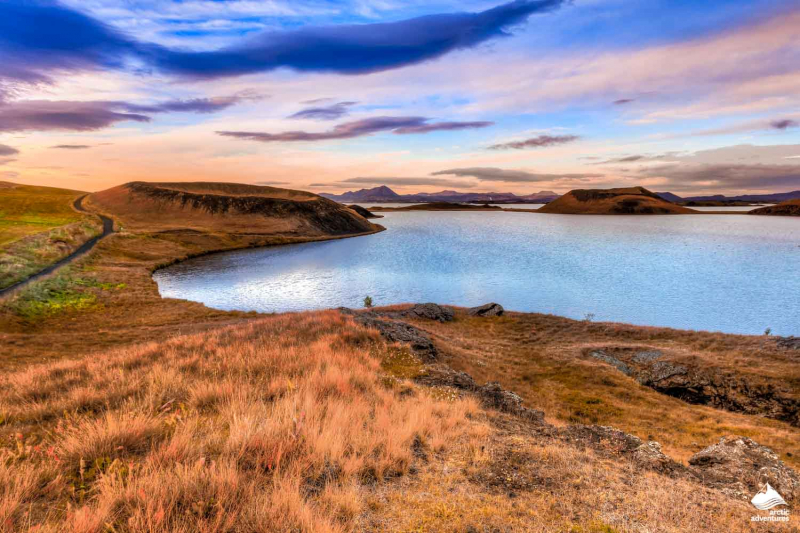
adventures.is 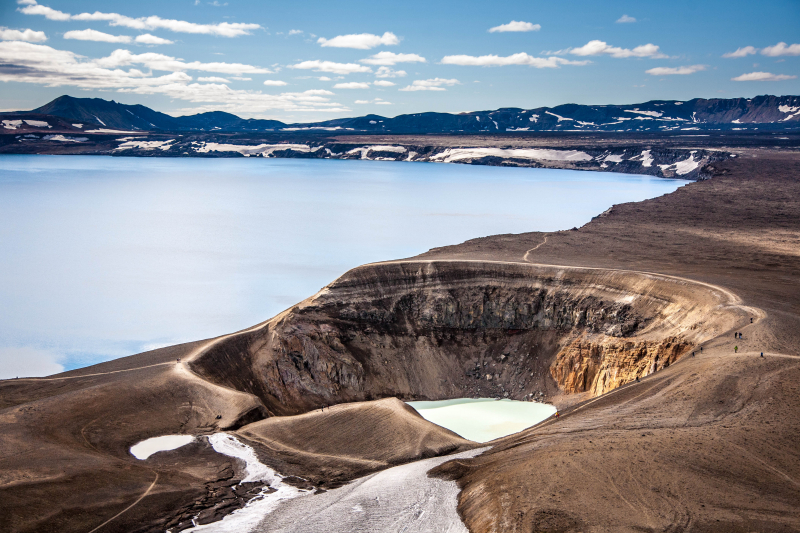
Guide to Iceland -
Whale viewing is available year-round, regardless of when you want to go, however summer is the most popular season to witness these gentle giants. Outings are available day and night during the warmer months, including trips for whale viewing under the midnight sun. Depending on the season, there is an 80–95 percent possibility of witnessing these majestic creatures, according to tour organizers. The best part is that surfacing frequently occurs close to the boats, giving you a front-row view of one of nature's most breathtaking displays.
There are furthermore offered ocean-based excursions including island visits and birdwatching. Tours are practical since they leave from Reykjavik's Old Harbor and come in a variety of forms. After you get back, make a stop at one of the several tiny, quaint eateries in the port area for a meal of fresh fish. Whale watching employs over 13,000 people globally and brings about $2.1 billion in tourism money each year.
Complex and ongoing discussions with the whaling business regarding the best way to utilize whales as a natural resource have resulted from the industry's magnitude and fast growth. Whale behavior, migratory patterns, and breeding cycles may be impacted by the fast increase in the number of whales watching trips and the size of the vessel used to see whales. The biology and ecology of whales and dolphins may be dramatically impacted by whale watching, according to recent, compelling data.
Location: Reykjavik
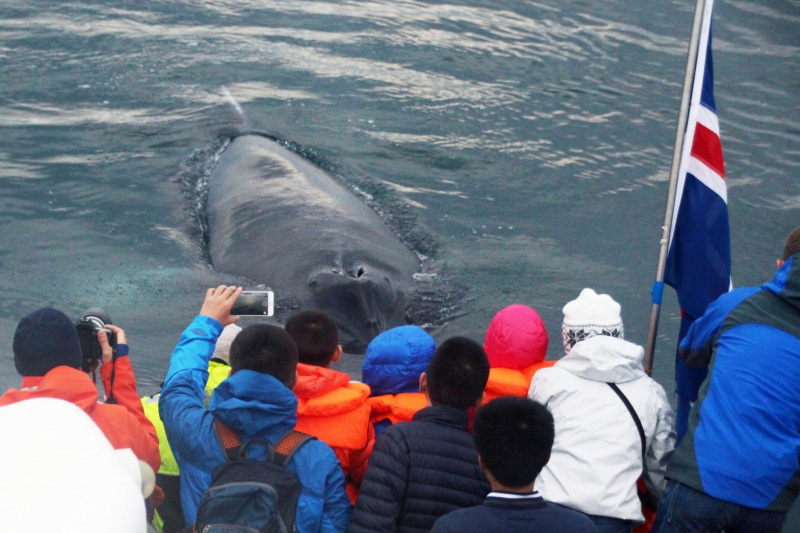
outdoyo.com 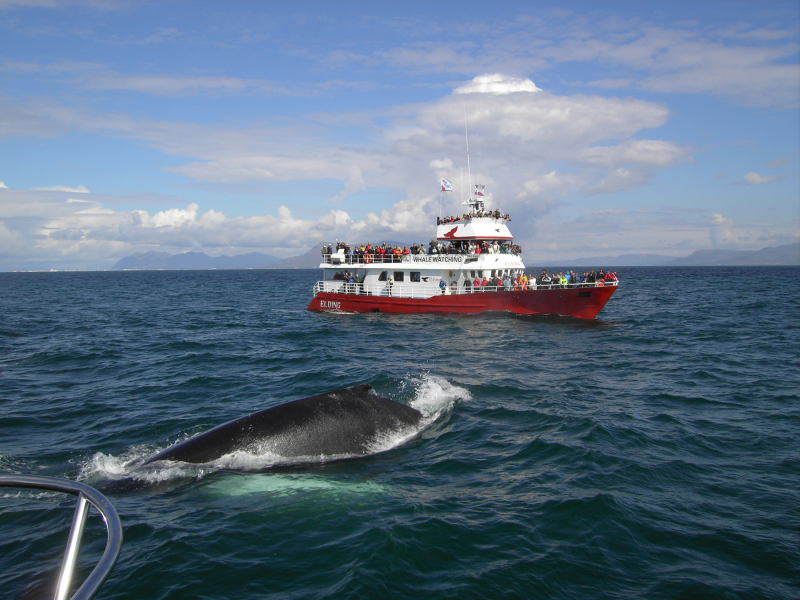
outdoyo.com -
Strokkur Geysir, from which all geysers are called, is the most famous fountain geyser in the nation and is only a simple 50-minute drive from Reykjavik. This extremely active hot spring region is a popular stop on the so-called "Golden Circle," which runs along the Hvtá River in the southwest of Iceland. Here, you may explore boiling mud pits and almost 100 additional smaller erupting geysers. Strokkur fires water 30 meters into the air every few minutes. All year long, the Geysir Center offers exhibitions and educational lectures. Digging up Geysir or "hot spring" bread, rye bread that has baked underground for 24 hours, is a fascinating event.
With addition, guests can assist a chef in boiling eggs in a hot spring to go with the bread. Strokkur is one of the island's most active geysers, thus it should not be surprising that it is one of Iceland's most well-known geysers. As the water begins to bubble and boil just before it spews forth its blazing hot water every 8 to 10 minutes, visitors to this geyser are filled with anticipation. The Great Geysir and Strokkur are close together, so many people visit both of these must-see Iceland geysers on the same day.
Location: Strokkur, Bláskógabyggð, Sudhurland
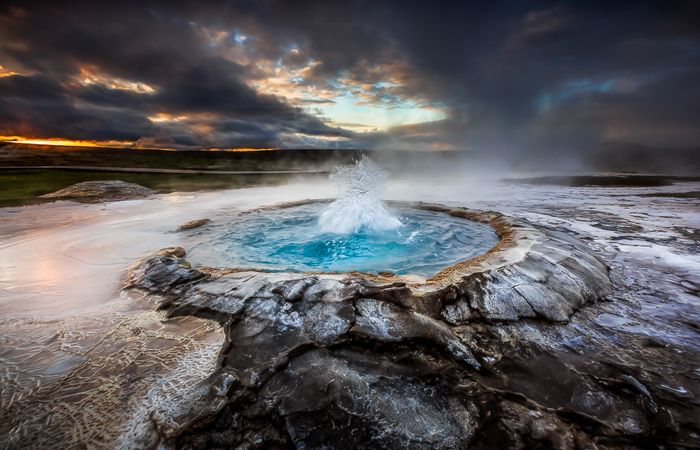
Pinterest 
jooinn.com -
Vatnajökull National Park in the south of the nation is a place of glaciers and stunning ice caves that draw explorers from all over the world. One of three national parks in Iceland, Vatnajökull Glacier and its environs make up the huge national park, which is separated into four areas. Numerous tourist centers may be found; those at Skaftafell Ice Cave and Höfn are open all year, although those in Skruklaustur and Jökulsárgljfur are closed during the winter. The greatest time to explore Skaftafell Ice Cave is in the winter, when a particularly severe downpour has removed the glacier's topmost layer.
The cave is illuminated with breathtaking blue light if seen at the correct moment. Off-season, group excursions to all locations are possible. You could think about going on a glacial trek with an expert guide if you are in good physical form. You may witness glacial crevasses and caverns on the excursions, and you can even sip fresh water from surface pools for an amazing experience. The naturally created ice cave will surely be the most spectacular thing you witness today. You may enter this stunning building to view the magnificent blue ice that is present inside. Don't forget to bring your camera on the tour; you'll want to document this event forever.
Location: Southern Iceland
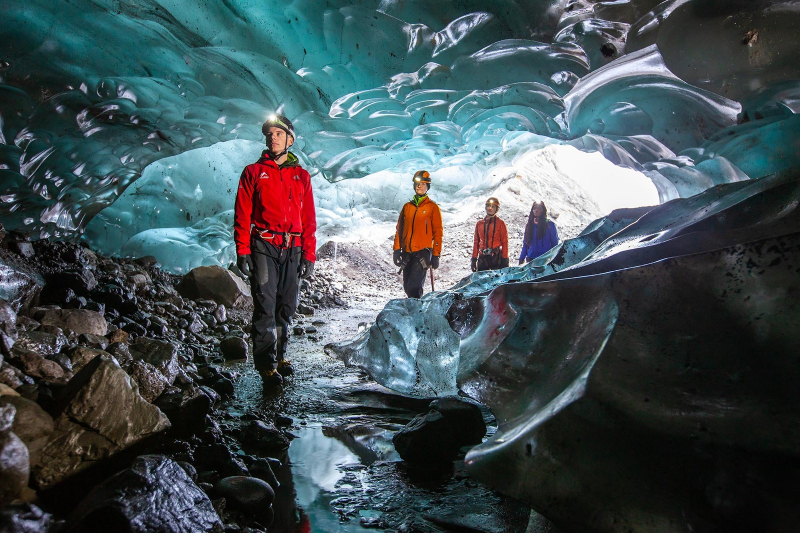
mountainguides.is 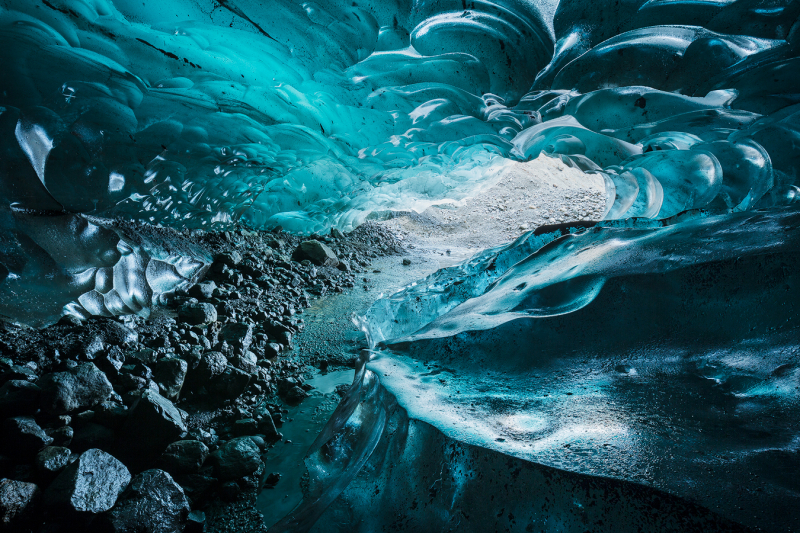
mountainguides.is -
One of Iceland's most visited water destinations is Gullfoss. Gullfoss is a component of Iceland's well-known day trip, the Golden Circle, which also includes ingvellir and the Haukadalur geysers. West of Reykjavik, the magnificent Gullfoss Waterfall is about a 90-minute drive away. A canyon formed by three step terraces and the river Hvtá's descent create a strong torrent. Gullfoss consists of two waterfalls; the lower one cascades roughly 21 meters while the higher one descends 11 meters.
Gullfoss receives torrents of water at an average rate of 109 cubic meters per second, however extreme flooding has seen rates as high as nearly twenty times that. A word of warning: there are no rails or barriers, just a spine-tingling spectacle to enjoy amid surroundings as nature intended. The British band Echo and the Bunnymen's album Porcupine's cover features Gullfoss. The falls are also mentioned in the novella The Odd Saga of the American and a Curious Icelandic Flock, where Dr. Gustafsson prefers Glymur, while Snorri prefers Gullfoss, at a supper. In the music video for the Live song "Heaven," Gullfoss makes an appearance. In a brief subplot of the television show Vikings, Gullfoss makes an appearance, and one character commits himself by jumping into it.
Location: Gullfossvegur, Reykholt, Sudhurland
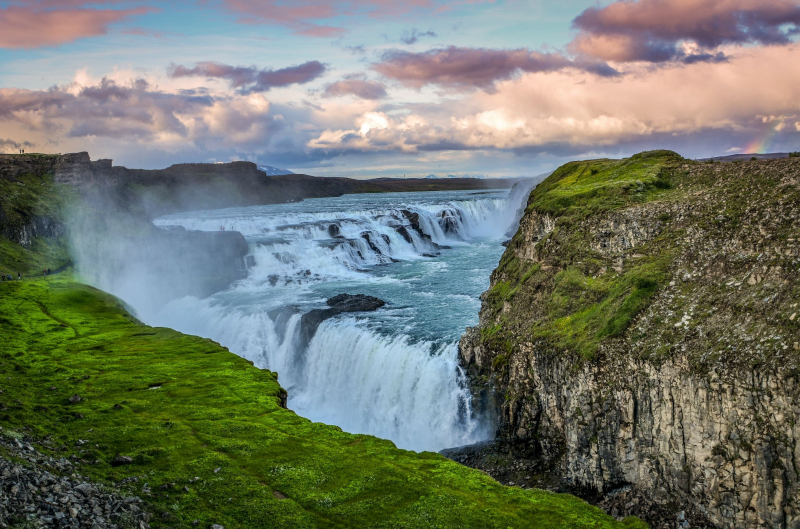
5-five-5.blogspot.nl 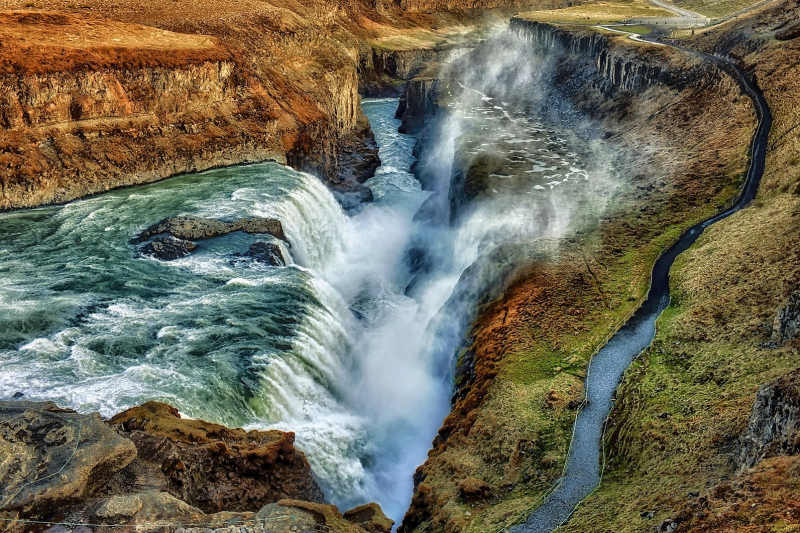
5-five-5.blogspot.nl












